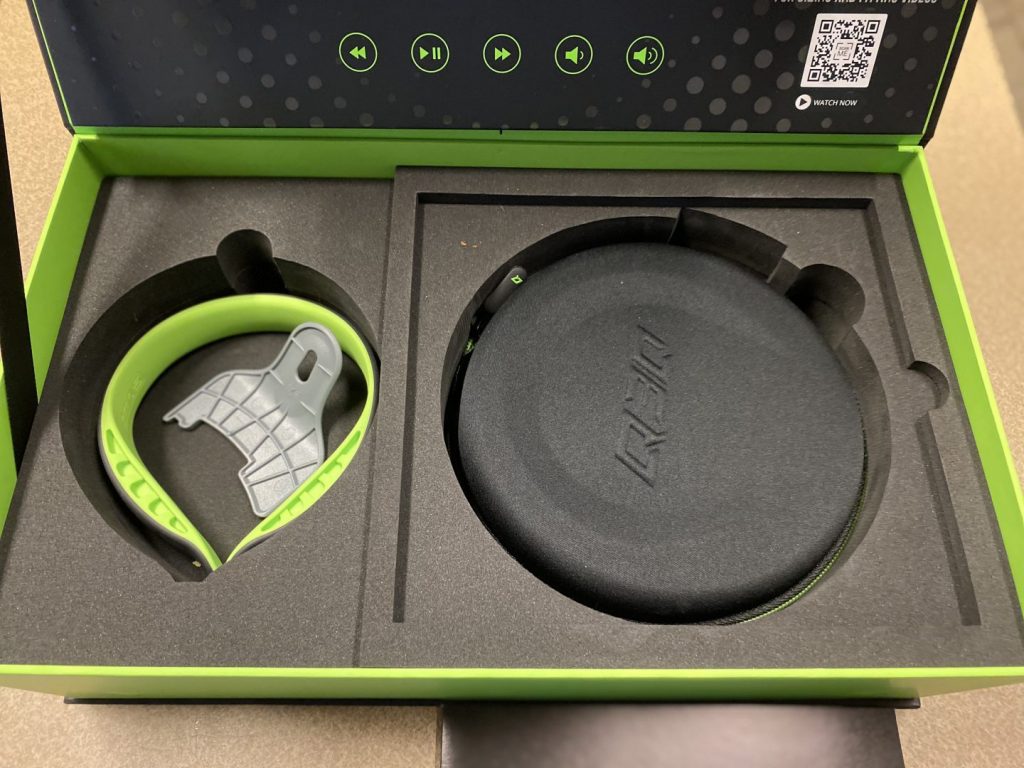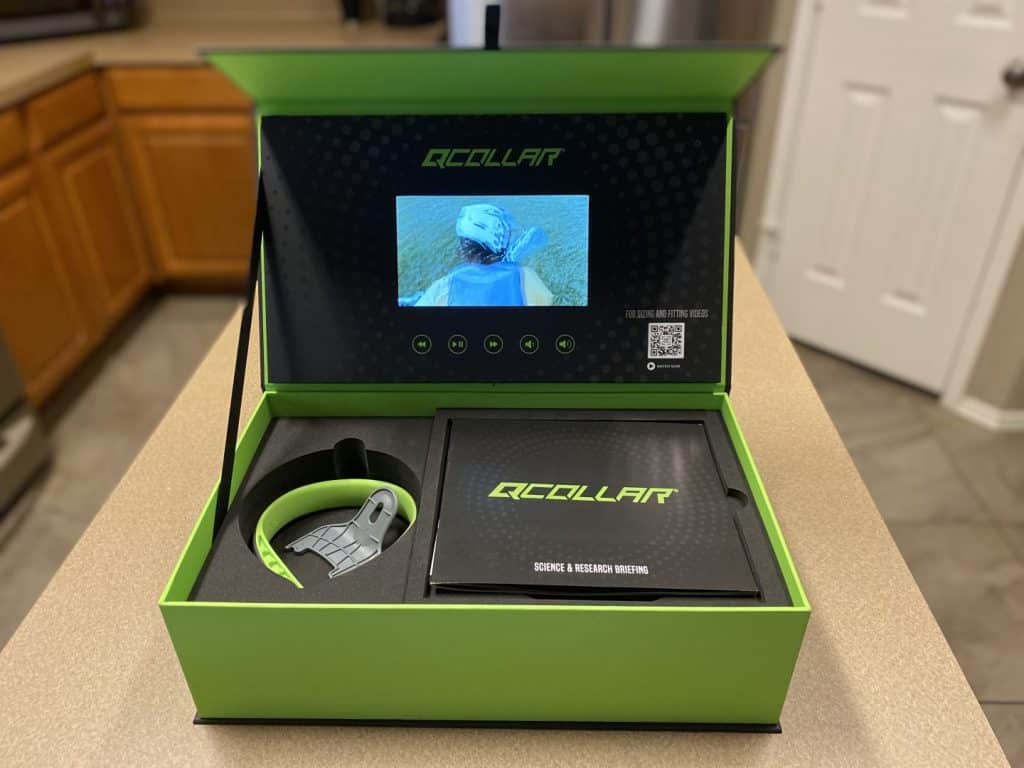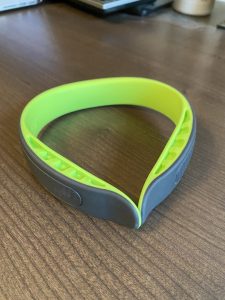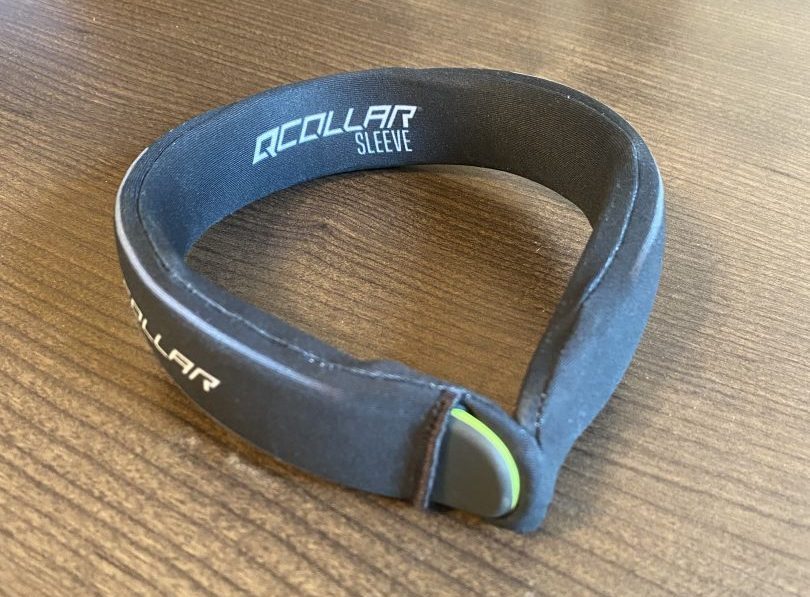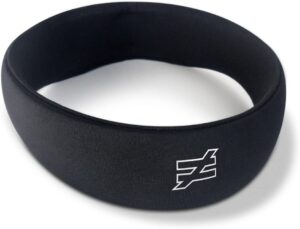Around the sports world, there’s no more important topic right now than how to reduce the brain damage caused by repeated blows to the head. The focus has been on college and professional football, but many other athletes are at risk for Traumatic Brain Injuries, or TBI.
New improvements in helmets help to combat the problem from the outside, but the Q Collar attacks the problem from the inside. It helps to reduce the damage done to the brain during impacts such as tackling or hitting the ground.
The military also gets their share of brain injuries from things like roadside bomb explosions. The Q Collar is equally effective at reducing brain injuries in a combat scenario as on a sports field.
Table Of Contents
What is Q Collar?
Q Collar is an external device that is worn around the back of an athlete’s neck. It applies slight pressure to the jugular veins, which increases blood flow to the brain. For more on the science behind it, read on.
Q Collar is “the first and only FDA-cleared solution that helps protect the brain during repetitive head impacts.”
The Science Behind the Q Collar
Inside your skull, your brain floats around in what’s called cerebrospinal fluid. When your head moves, your brain also moves around inside your skull. When you experience a blow to the head, your brain can impact the inside of your skull. This is called slosh.
By applying slight pressure to the jugular veins, the Q Collar increases the amount of blood volume in the brain’s venous structures. This extra blood acts as internal padding, reducing the amount of damage caused by brain slosh.
The company reports that there are no physical side effects from the pressure applied to the jugular veins. In fact, some athletes they tested reported better athletic performance while using the Q Collar.
I won’t bore you with too many statistics, of which Q Collar provides ample amounts on their website to back up their claims. There are two statistics, however, that did jump out at me while reading up on the device.
First, jugular compression reduced damage to brain neurons and axons (key indicators of brain injury) by 83%.
Second, wearing the Collar resulted in no significant changes in white matter in 77% of athletes wearing the collar, while significant changes in white matter were found in 73% of athletes not wearing the collar. White matter is the deep brain tissue most affected by repeated head trauma.
You can read more about their clinical trials here.
Q Collar Unboxing
I don’t usually include an unboxing section in this type of review, but I felt that it was important to do so here. The packaging that my Q Collar arrived in was extraordinary. The package is about the size of a shoebox. It’s made of a cardboard material similar to a shoebox, but more sturdy, and it feels rubberized with some sort of grippy, tactile component to it.
There is a pull tab on the front of the box and when you pull it, the lid lifts open. Once open, a small LCD screen on the underside of the lid begins playing a short video about the Q Collar. The video is crisp and clear, with clear audio as well. I was definitely not expecting that when I opened the box for the first time.
Inside the box below the LCD screen, you have divided compartments for the actual Q Collar itself, a sizing tool, a carrying case, and finally instructions and information pamphlets. There’s even a USB cord. Since the Q Collar itself doesn’t have any electronic parts, I assume the USB cord is for charging the LCD display or uploading videos to it.
I’m not sure if this type of box design is just for vendors and reviewers, or if this is what every customer will receive. Either way, they hit a home run with the presentation.
Q Collar Design
The design of the Q Collar is sleek and simple. With no moving parts or electronics, it’s extremely easy to use. The collar sits on the back of your neck and the open end presses on your jugular veins at the base of your neck. Just above where your neck meets your chest.
The device itself feels well constructed. I wouldn’t expect it to be damaged by repeated hits such as at football practice or game.
The Q Collar currently comes in an attractive shade of neon green and black. I also received a sleeve for my Q Collar. It’s made of polyester and spandex and slides over the device to give it a uniform black appearance . Which will attract less attention while in a uniform or jersey.
On their website, Q Collar says that they will soon begin offering the Q30 in solid black and multicam camouflage for military users.
Fit and Feel
The most important thing to consider is getting the right size. When you order your Q Collar, you will be asked for your neck size. They also provide an easy guide on their website to show you exactly how to measure your neck to get the correct fit. If your Collar is too large or too small, it won’t sit in the correct location on your neck to apply pressure to your jugular veins.
While wearing the Q Collar, I definitely noticed it. That doesn’t mean that it was obtrusive or distracting, because it wasn’t. I could feel the pressure on my jugular veins. Howeever, I didn’t feel any significant difference in my body or brain function. I’m actually wearing it while typing this review, and after a few minutes, I forgot that I had it on.
Alternative Concussion Prevention Products
Prior to the advent of the Q Collar, there have been some products designed to also help prevent concussions. Obviously standard gear for sports like football you want to be sure you have gear that is inspected and in working condition. Here are aa couple other items we found on Amazon that might work for the activity you are participating in.
Soccer Concussion Prevention – Unequal Halo 3
Although it looks like a regular headband, the Unequal Halo 3 has 360 degrees of impact protection. At just 2oz, you will hardly notice you are wearing it, but be glad you are if you have a collision on the pitch. Any sport you don’t have a helmet as an option, you can use the Halo 3. Great head impact protection for sport and activities like:basketball, girls lacrosse, field hockey, flag football, cheer-leading, curling, volleyball, etc.
Study on Protecting Military Personnel From Blast Injury
The military is trying to understand the relationship between those that fire heavy equipment, like .50 cals, shoulder fired rockets, etc. and TBI. If you have a .50 cal and fire it at the range, this article about Protecting Warfighters from Blast Injury is worth a read.
Final Thoughts
The Q Collar seems like a thoroughly researched and tested device. They have tons of tests, trials, and research available on their website to back up their claims. They also have some very big names on board as ambassadors. Luke Kuechly is probably the most prominent name, but there are others.
The claims that they make are pretty big as well. Reducing neuron and axon damage by 83% is profoundly significant. The white matter data is also extremely promising.
I believe that we are witnessing the beginning of something huge in the effort to combat TBI and CTE in the NFL and other contact sports, as well as helping to protect our Soldiers in combat. I would not be surprised if a few years down the road, all NFL players and deployed Soldiers are wearing a device like the Q Collar.



